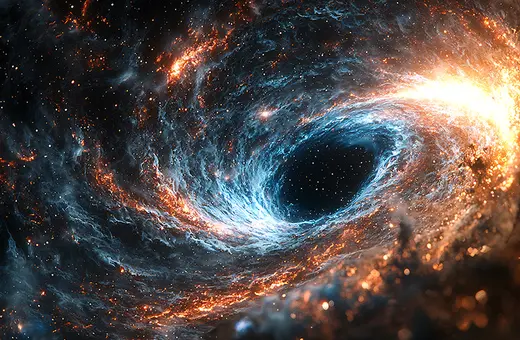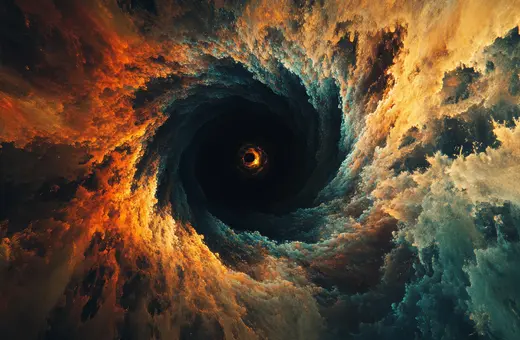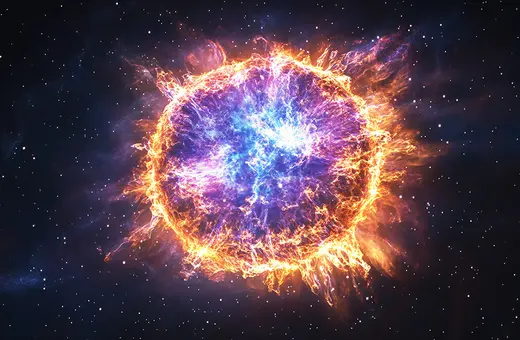There is no shortage of debate about the nature of dark matter, a mysterious substance that many believe makes up a large proportion of the total mass of the universe, in spite of never having observed it directly. Now some believe that Landauer’s principle, which dictates the physical nature of information, is raising a startling possibility: that dark matter might be information itself, writes Melvin Vopson.
One of the greatest curiosities of modern physics is the nature of the mysterious substance known as “dark matter”. It is widely accepted that the make up of the Universe is about 5% ordinary (baryonic) matter consists of baryons — an overarching name for subatomic particles such as protons, neutrons and electrons, 27% dark matter and, 68% of the universe is made of something even more puzzling called “dark energy”. Unlike normal matter, dark matter does not interact with the electromagnetic force. This means it does not absorb, reflect or emit light, making it extremely hard to spot.
 SUGGESTED READING
Infinity: the question cosmology can't answer
By Peter Cameron
SUGGESTED READING
Infinity: the question cosmology can't answer
By Peter Cameron
Dark matter was first suggested in 1920s to explain observed anomalies in stellar velocities, and later in the 1930s, when Fritz Zwicky, a Swiss astronomer noted a discrepancy between the mass of visible matter and the calculated mass of a galaxy cluster as well as a discrepancy between the motion of a cluster of galaxies was much too fast to be held by gravitational attraction of visible matter alone. The existence of this gravitational anomaly, Zwicky termed dunkle Materie - 'dark matter.' However, the strongest scientific argument for dark matter’s existence came in the 1970s with the work of the US astronomer Vera Rubin, who showed a consistent effect of spiral galaxies rotating too fast for the amount of visible matter present. Both Rubin and Zwicky had observed something adding to the force of gravity impacting these galaxies.
The main observational evidence in the 1970s came from researching galaxy rotation curves. Studying galaxy rotation curves allows the study of the kinematics of galaxies, and provides a way to estimate their masses. The orbital velocity of a rotating disk of gas and stars is expected to obey Kepler's second law, so the rotation velocities should decline with distance from the centre. Experimental observations indicate that the rotation curves of galaxies remain flat as distance from the centre increases. Since there is more than expected gravitational pull if only the observed light / baryonic matter of a galaxy would be present, the flat rotation velocity curves are a strong indicator that something else is there, termed dark matter.

Predicted and observed galaxy rotation curve of a spiral galaxy. Dark matter is needed to explain the 'flat' rotation velocity curve even for stars located at very large distances from the galactic centre. Credit: www.resonance.is
Although the existence of dark matter is generally accepted, a significant community of scientists are working on alternative explanations that do not require the existence of dark matter at all. To this end, there are various theoretical approaches, usually involving modifications of the existing established theories such as modified Newtonian dynamics, modified general relativity, entropic gravity and tensor-vector-scalar gravity, to name a few.
___
Some have proposed that “information” is the 5th state of matter along solid, liquid, gas and plasma and possibly the dominant form of matter in the universe
___





















Join the conversation